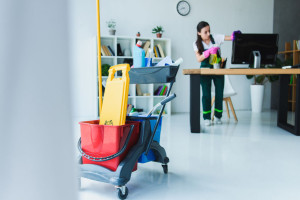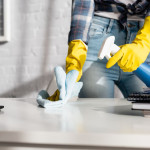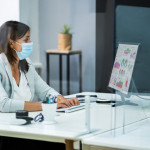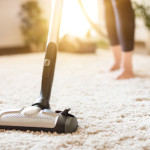 In the field of facilities management, the terms “clean,” “sanitize,” and “disinfect” might seem synonymous to many but they actually entail different levels of surface treatment and have distinct impacts on both the effectiveness of a cleaning program and the safety of an indoor environment.
In the field of facilities management, the terms “clean,” “sanitize,” and “disinfect” might seem synonymous to many but they actually entail different levels of surface treatment and have distinct impacts on both the effectiveness of a cleaning program and the safety of an indoor environment.
The Basics of Cleaning
Cleaning is the process of removing visible dirt, dust, and impurities from surfaces. This is usually the first step in a comprehensive facility maintenance routine. While it primarily targets visible soiling and debris, cleaning plays a vital role in the overall maintenance of a space. Professional cleaners often focus on cleaning areas like floors and windows where the risk of harboring harmful microorganisms is relatively low. However, the significance of proper cleaning stretches beyond just aesthetics and plays a fundamental role in the health of indoor occupants by removing potential allergens and irritants from the environment.
Despite its benefits, a major concern in cleaning is the risk of cross-contamination. This can occur if the cleaning tools themselves or the solutions used are not up to industrial standards. Employing a reputable cleaning service ensures that advanced techniques and appropriate products are used, minimizing the risk of spreading contaminants.
The Role of Sanitization
Sanitization moves a step beyond simple cleaning. This process involves the reduction of bacteria to safe levels as determined by public health standards. Unlike disinfection, sanitization does not necessarily eradicate viruses or fungi but is crucial in settings where hygiene is a priority, such as in kitchens and medical facilities. Health regulations often mandate sanitization of food contact surfaces to prevent the spread of bacteria that could cause illness.
The Importance of Disinfecting
Disinfecting is the most intense form of cleaning, aimed at killing microorganisms on surfaces, particularly in places that are frequently touched like doorknobs, countertops, and restroom fixtures. The effectiveness of disinfecting products, including commonly used disinfectant wipes, is a subject of ongoing evaluation by regulatory bodies like the EPA, which categorizes and reviews these products for their efficacy and safety.
Given the varying effectiveness of consumer-grade disinfectant products, incorporating these into a broader, professionally managed cleaning regimen provides the best defense against the spread of harmful bacteria and viruses in a workplace.
Beyond Routine Cleaning: Long-Term Protection
In today’s environment, ensuring the continued safety and cleanliness of surfaces is key. MicroShield 360 antimicrobial germ protection system is an innovative solution that offers peace of mind by safeguarding surfaces from a variety of pathogens including bacteria, mold, mildew, and fungus. With just one application, this system provides protection for up to a year, significantly enhancing the cleanliness and safety of any facility.
The takeaway? The distinction between cleaning, sanitizing, and disinfecting is crucial for effective facilities management. Each plays a unique role in maintaining a safe and healthy environment. While regular cleaning removes visible dirt and reduces potential allergens, sanitizing and disinfecting are critical for controlling the spread of harmful microorganisms. Combining these with advanced protection technologies like MicroShield 360 ensures not only immediate cleanliness but also long-term sanitary benefits. Reach out to us to learn more about creating a healthier, safer environment in your facility with the help of our professional services and innovative protection systems. http://system4utah.com








